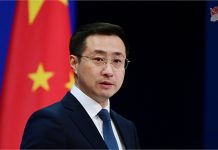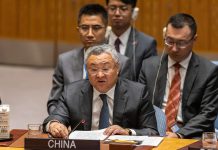In early August, Mongolian Prime Minister Luvsannamsrai Oyun-Erdene paid his first visit to the United States during his tenure. In an exclusive interview with Reuters, Oyun-Erdene said he’d reached several important agreements during his meeting with U.S. Vice President Kamala Harris, including the further deepening of rare earth mining cooperation between the two countries.
Many attribute the U.S. efforts in the global search for rare earth to the Chinese Government’s export controls on gallium and germanium, two niche metals critical to the semiconductor industry. But in fact, neither gallium nor germanium are rare earth elements (REEs).
REEs, an irreplaceable and non-renewable resource in civil, military and nuclear industries, comprise just 17 elements from the periodic table, which features 118 elements in total. REE resources have played a critical role in the national security, energy independence, environmental future and economic growth of many countries.
For a relatively long time, the price of rare earth products remained low and failed to reflect their value. Since the second half of 2010, despite the gradual rise in the price of rare earth products, this increase has been much lower than that in the prices of other raw materials like gold, copper and iron ore.
China possesses the largest rare earth resources on the globe. A whitepaper on the current situation of the country’s rare earth industry, which China released in 2012, revealed how for many years, China had been providing over 90 percent of the global market’s rare earth needs, holding 23 percent of the world’s total reserves.
But excessive exploitation and outdated production processes and techniques caused serious problems. In May 2011, the State Council, China’s cabinet, issued guidelines on REE resources and environmental protection as well as on the industry’s sustainable development by strengthening control over the mining, production, circulation, import and export and improving its administration.
China’s dominant REE refining capacity, buoyed by “low labor costs and lax environmental regulations,” makes it the world’s top destination for REE processing, according to a report issued by the U.S. Foreign Policy Research Institute in June 2021, which further read the U.S. had imported 98 percent of its processed REEs from China in 2018.
“U.S. policymakers must set specific targets to decrease reliance on Chinese REEs and critical minerals” and “signal clear intent to international partners to build robust levels of Western REE self-reliance,” the report said.
“The United States and its allies should pursue policies that guarantee dependable access to these critical resources at affordable prices, like those in response to the 1970s Arab embargo-triggered energy crisis,” the report further stated, suggesting Washington take Central Asia and Mongolia as alternative low-price REE resource suppliers.
In recent years, newly discovered reserves of coveted REE resources in the world have been increasing. For example, last year, Türkiye announced it had discovered the world’s second largest rare earth reserve; many Western mining companies have also announced that they will start mining rare earths in Denmark’s autonomous territory of Greenland, the largest island in the world and boasting huge REE reserves.
But even more important than just mining is maximizing the recovery rate of rare earth elements through the development and perfecting of the refinement processes. This is vital to the increased capacity of production of REEs.
China’s REE smelting and separation technology, for example, is a global leader in the field with an REE resource extraction ratio of over 99 percent. From the processing of rare earth ores to the manufacturing of final products, China features a relatively complete industrial chain.
If the U.S. hopes to use Mongolia to break China’s monopoly in the field of global rare earth smelting, it may have bitten off more than it can chew.
Mongolia’s industrial base is relatively backward and it cannot independently mine REE resources. It needs the U.S. to provide supporting equipment and infrastructure construction in advance. Whether American companies are willing to bear these costs and risks as of yet remains unknown.
The real purpose of REE cooperation between the U.S. and Mongolia might also not be the actual resources. Perhaps the U.S. intends to drive a wedge between China and Mongolia and prevent Chinese enterprises from exploiting rare earths in Mongolia, while Mongolia, a land-locked country between Russia to the north and China to the south, in turn is taking advantage of the situation to bargain with China and Russia by introducing the U.S. into the regional geopolitical competition.
There is nothing wrong with sovereign states cooperating and competing. But it is always worth noting a piece of ancient wisdom: When a cat tries to work with a monkey to pull chestnuts out of the fire, it must remember not to burn its paws. –The Daily Mail-Beijing Review news exchange item






